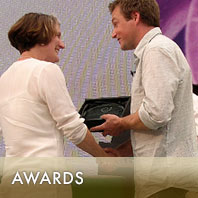Caring for Box

Box (Buxus) is a very popular choice for adding green architecture, whether hedging, formal topiary or looser cloud shapes, to gardens, and with good reason. It is neat and slow growing, grows in a wide variety of situations from sun to dry shade, chalk soils etc, and not many pests attack it.
To keep it looking its best it needs some simple care.
Box should be trimmed at least once a year. It starts to make lots of lush new growth in Spring, but it is best not to be too hasty to trim this back to shape as it is very easily bruised and damaged. Better to wait until June or so when it is a bit tougher. A second trim in August may be necessary to neaten the plant up, particularly if it was trimmed early and continued to make growth afterwards.
A few tips are worth bearing in mind to help reduce the risk of Box Blight, which is a destructive fungal disease which can result in having to destroy all your Box plants so well worth avoiding!
1. The fungus is spread in damp conditions so, although it is often advised to trim hedges when the weather is damp to avoid scorching leaves, in the case of Box it is best to look for a dry spell to reduce the risk of the fungus being able to infect newly cut surfaces.
2. Clean your shears well, as the fungus can easily be transmitted on tools.
3. Water using a watering can or hose onto the soil at the base of the plant, do not use overhead sprinklers. Slow release irrigation pipes under the surface are ideal.
All hedges and topiary are grown quite intensively as we clip them and expect them to put on lots of new dense growth. They therefore benefit from feeding and regular watering, especially if grown in containers. If Box starts to get coppery looking leaves, this is often a sign that it is lacking nutrients. A slow release fertiliser can be added once a year and this should keep the leaves a healthy green.
Categorised in: Advice
This post was written by Christine Whatley on July 11, 2014 4:33 pm







